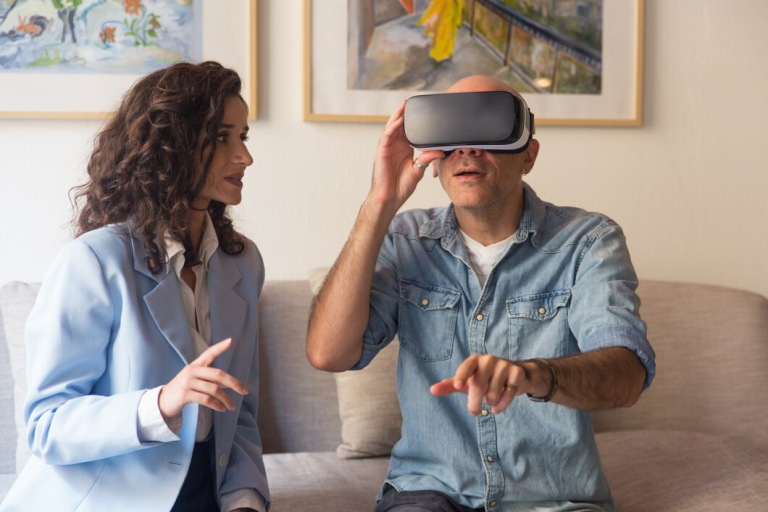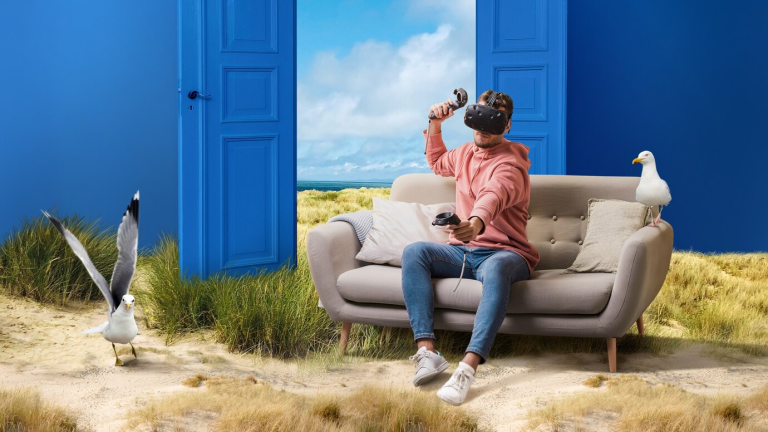In the rapidly evolving field of architecture and design, staying ahead requires embracing cutting-edge technologies that enhance efficiency, creativity, and client engagement. Virtual Reality (VR) is emerging as a pivotal tool, offering immersive and interactive experiences that traditional design tools can’t match. Let’s delve into the reasons why incorporating VR into your workflow is essential in 2024 and how to start.
Understanding the Benefits of VR in Architecture
Enhanced Visualization
One of the most significant advantages of VR in architecture is its ability to transform 2D plans into immersive 3D environments. Clients and designers can virtually walk through spaces, understanding dimensions, lighting, and finishes with unparalleled clarity. This immersive visualization enhances design comprehension, enabling clients to make decisions confidently.
Efficient Collaboration
Virtual Reality offers a unique collaboration platform, allowing multiple stakeholders to interact within a virtual model simultaneously. This means that architects, designers, and clients can collaborate on projects in real time, regardless of their geographical location. This facilitates smoother communication, quick decision-making, and fewer misunderstandings during design phases.
Design Iteration and Feedback
Iterating designs in VR allows for immediate feedback from clients and stakeholders. Instead of waiting for physical models or 2D renderings, changes can be made and visualized instantly within the virtual environment. This accelerates the design process, reducing costly changes in later project stages.
Setting Up Your VR Environment
Choosing the Right Hardware
The first step in integrating VR is selecting the right hardware. A robust VR setup includes headsets and workstations that can handle the graphical demands of architectural visualization. Popular options include Oculus Rift S and HTC Vive, which offer a balance of performance and affordability. Ensure that your workstation has a powerful GPU, plenty of RAM, and a fast processor to render complex models smoothly.
Selecting Software
The software you choose should seamlessly integrate with your existing design tools. Autodesk Revit, for example, pairs well with Enscape for real-time visualization. Other notable platforms like Twinmotion and Unity provide immersive VR experiences and work with various architectural design tools. Evaluate your team’s needs and select software that best fits your workflow.
Training Your Team
Investing in VR technology is only beneficial if your team knows how to use it effectively. Organize workshops or bring in experts to train your staff on the basics of VR usage, navigation, and its integration into architectural design. This ensures a smoother adoption and helps your team maximize the technology’s potential.
Implementing VR in Your Workflow
Start Small
If your team is new to VR, it’s best to start with simple projects to get comfortable with the technology. Introduce VR gradually, perhaps using it for internal design reviews before involving clients. This allows your team to become familiar with the technology and understand how to navigate and interact in a virtual space.
Develop a Process
Incorporate VR into your workflow by creating a clear process for its use. Decide when and how VR will be integrated—such as during design reviews or client presentations—and ensure your team is aligned. A well-defined process prevents chaos and ensures a smooth transition.
Gather Feedback
Consistently gathering feedback from both your team and clients is essential. This will help refine your VR processes, identify areas needing improvement, and measure the technology’s impact on your workflow. Listen to suggestions and be open to adjustments that can enhance your team’s experience.
Overcoming Challenges with VR Adoption
Cost of Technology
The initial investment in VR technology can be significant. However, the return on investment comes from enhanced client satisfaction, reduced rework, and increased efficiency. To ease the cost, start with basic setups and gradually upgrade as your team becomes more proficient.
Learning Curve
VR comes with a learning curve that can initially slow down the design process. Investing in training and starting with smaller projects helps overcome this hurdle. Encourage your team to experiment and learn from mistakes to improve proficiency.
Integration with Existing Tools
Ensuring seamless integration of VR tools with existing design software can be challenging. Work closely with your IT team to identify compatibility issues and choose VR software that fits into your current design workflow.
Case Studies: Success Stories of VR in Architecture
Enhancing Client Engagement
A renowned architectural firm integrated VR to present design proposals for a high-rise building. The immersive experience allowed clients to visualize the views from different floors, understand the spatial flow, and make immediate decisions on design elements, significantly reducing the time spent on revisions.
Improving Design Accuracy
Another firm used VR to refine a complex industrial project. The virtual walkthroughs enabled the design team to identify spatial conflicts and ergonomic issues early, leading to a more accurate design and reduced construction rework.
Conclusion
In 2024, VR has evolved from a futuristic concept to a practical tool that architects and designers can no longer ignore. Its benefits in visualization, collaboration, and efficiency make it an essential addition to any design workflow. By understanding its advantages, setting up the right environment, and gradually incorporating it into your processes, your team can unlock the full potential of VR.
For tailored advice and solutions on implementing VR in your architecture and design workflow, reach out to VRchitects. Let’s embrace the future of design together.






